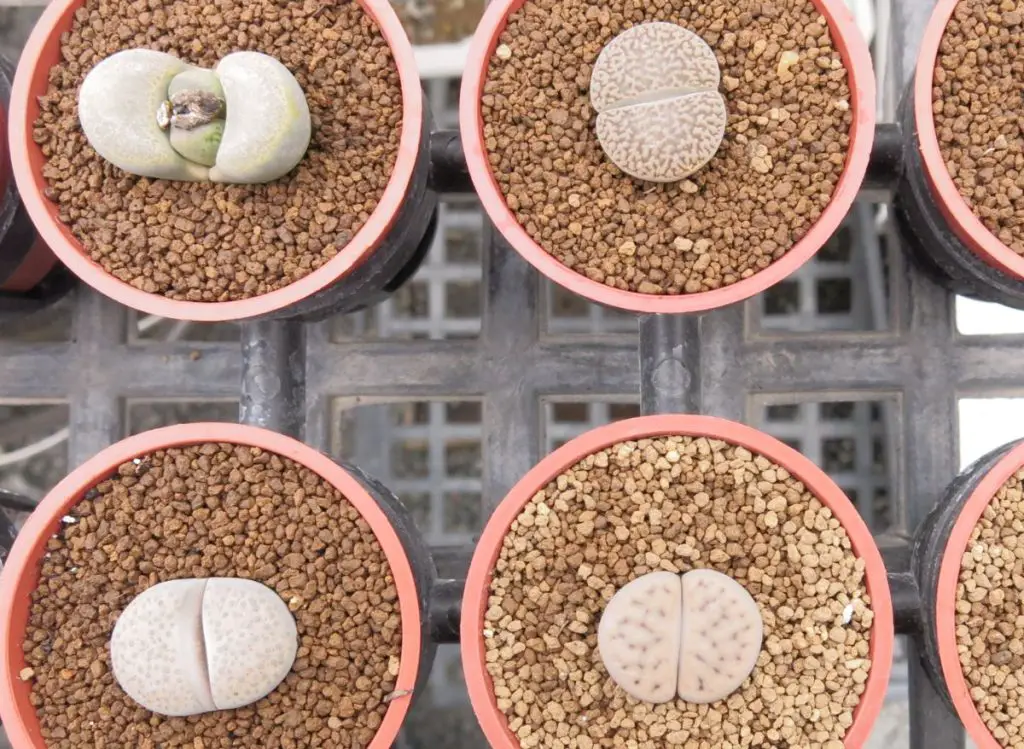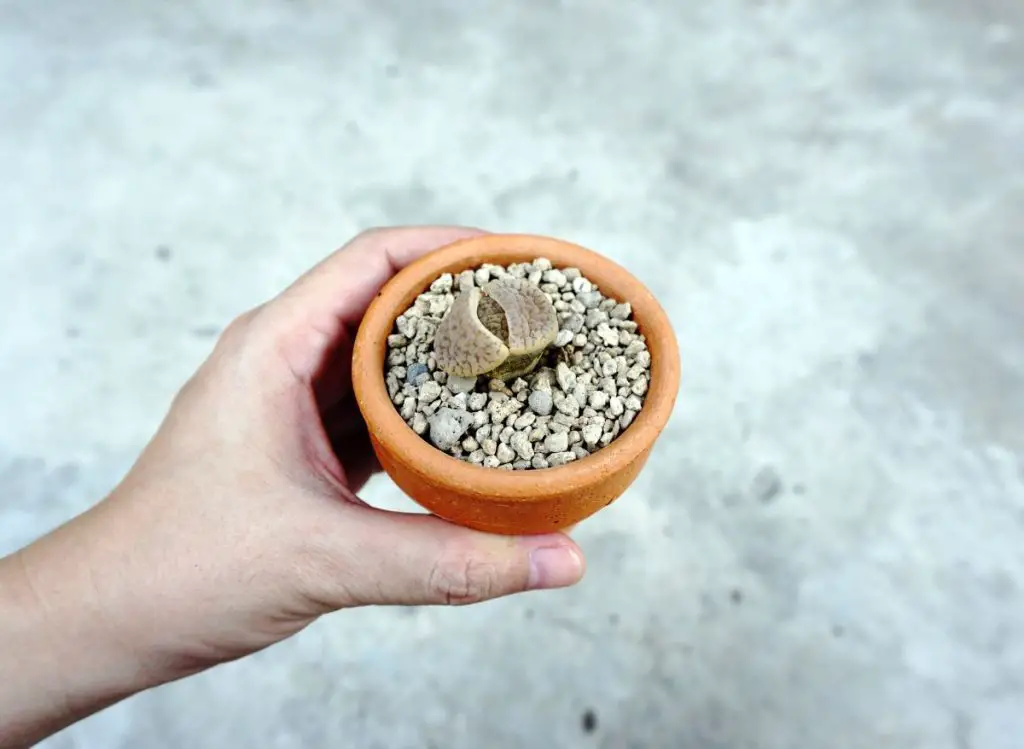
If you are a succulent lover, you are probably familiar with the plant Lithops. Commonly referred to as living stones, Lithops are known for their ability to store water in their leaves, making them resilient in dry conditions. One of the interesting aspects of Lithops is their ability to split, which can leave most people puzzled and wondering whether their plant is dying or not.
So, how to know if Lithops are splitting? You can often tell if they will split by feeling or gently pinching around the base for a hard lump, the new emerging plant. Also, if they are thirsty, the top part will feel hollow and give a lot more when you pinch it. Lithops are commonly seen as houseplants and are quite tolerant of different environments.
Read on to learn how to identify the signs of splitting. Check out this article if you wonder how long it takes for lithops to split.
Are Living Stones Hard to Grow?
Lithops are native to South Africa and have distinctive features that make them one of the most fascinating and easy-to-grow succulents (Source: University of Wisconsin-Madison Division of Extension)
Lithops usually have a round shape, resembling a small stone. If you look closely at their surface, they have various colors and patterns, which are typically used as camouflage in their natural habitat.
What is Splitting?
Splitting is a natural way lithops produce new leaves and replace old growth after blooming, and it happens mainly due to overwatering. After they fully grow, lithops divide and produce new leaves yearly.
Generally, splitting begins at the edges of the existing leaves, and a gap occurs between them as new ones emerge. I invite you to watch this video if you want to know why your Lithops aren’t splitting.
Signs that Your Lithops Might be Splitting
There are several ways to tell if your Lithops are splitting. Some of the signs to look out for include:
1- Look for Visible Cracks
The first sign that your Lithops are splitting is the appearance of visible cracks on the surface of the leaves. Lithops leaves are thick and fleshy, and when the plant is healthy, the leaves will feel firm and taut.
However, if you notice that the leaves have started to crack or appear wrinkled, it could indicate that the plant is splitting.
2- Check for New Growth
Another way to tell if your Lithops are splitting is to check for new growth. When a Lithops plant splits, it will usually produce new leaves or heads from the center of the plant.
These new leaves will usually be smaller and thinner than the original leaves, and they will have a different texture. If you notice new growth, it is a good indication that your Lithops are splitting.
3- Observe Changes in Color
Lithops plants come in a variety of colors, from rust, green, and pink to brown and gray. However, if you notice that the color of your plant has changed, it could be a sign that it is splitting.
Generally, when a Lithops plant splits, the color of the leaves will become lighter, and the texture will become thinner. If you notice these changes in your plant, it is a good indication that it is splitting.
4- Check For a Hollow Center
When a Lithops plant splits, it can create a hollow center in the plant. To check for a hollow center, gently press your fingers around the base of the plant.
If you feel a depression or a soft spot, it could indicate that your plant is splitting. However, it is important to note that not all Lithops plants will develop a hollow center when they split.
5- Look For Separation
As Lithops plants split, the new growth will usually begin to separate from the parent plant. This separation can be subtle at first, but as the new growth matures, it will become more pronounced.
To check for separation, gently wiggle the new growth to see if it moves independently from the parent plant. If it does, you can be sure that your Lithops are splitting.
6- Look For Daisy-Like Flower
Another way to tell if your lithops is ready to split is when it has pushed out a daisy-like flower. Briefly, after the daisy-like flower bloom, the lithops will go dormant.
Also, overwatering can cause Lithops to split. Here is an excellent video I encourage you to watch to learn what to do when your Lithops are splitting.

How to Prevent Splitting
The best way to prevent splitting in Lithops is to avoid overwatering and to provide adequate drainage. Lithops do not require frequent watering, and their soil should be allowed to dry between watering sessions. Generally, it is best to water them thoroughly once a month during the growing season and avoid watering at all during winter.
In addition, use a well-draining soil mix that contains coarse sand, pumice, or perlite. This will ensure that the water can quickly drain away, preventing water accumulation. I encourage you to watch this video if you wonder what to do when Lithops split late.
What to read next:
- When do Lithops Flower: Must Know For Everyone!
- Lithops Growth Cycle: Everything you need to know about.
- Here’s How To Deal With Splitting Lithops.
Wrapping Up
Lithops are beautiful and low-maintenance plants that are perfect for both beginner and experienced gardeners. Splitting is one of the most common things about Lithops.
Remember to avoid overwatering, provide adequate drainage, supply your Lithops with a well-draining mix, and observe the plant closely so that you can take action if you notice any signs of splitting.

